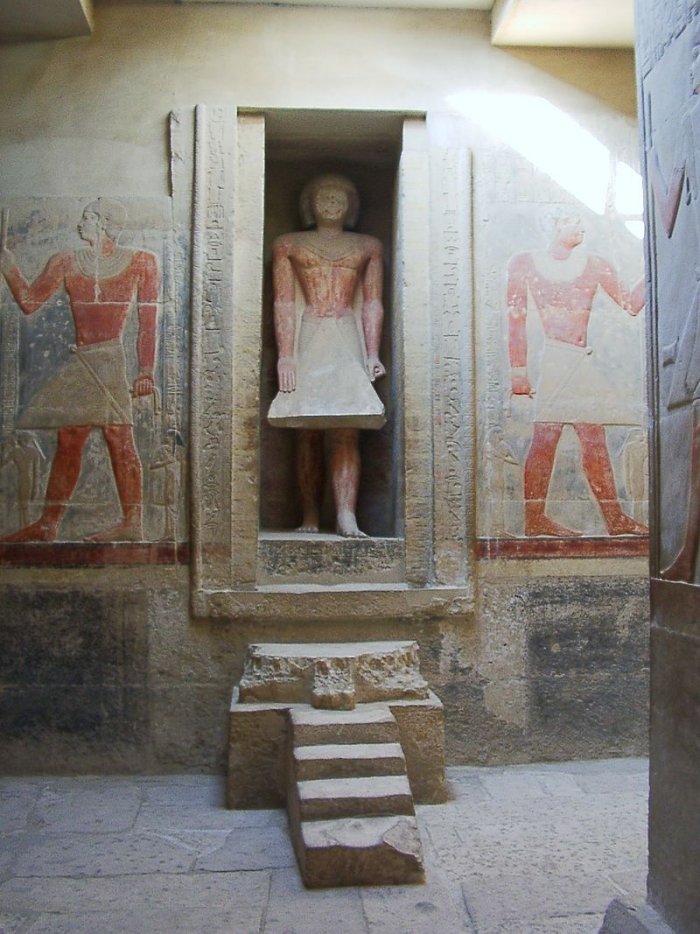Death And Afterlife In Ancient Egyptian Beliefs – Death As Transition To Another Reality
A. Sutherland - AncientPages.com - Throughout history, the ancient Egyptians believed in life after death and that Osiris, the god of the afterlife, the underworld, and the dead, would judge you.
Preparing the dead bodies for eternal existence in joy and happiness was important.
The Ancient Egyptian Book of the Dead depicts a scene in which a deceased person's heart is weighed against the feather of truth. Image credit: Hunefer - scribe and civil servant - public domain
Numerous tombs of various styles and dates containing carefully prepared bodies and a variety of funerary goods reveal an ancient Egyptian belief in the afterlife, which was not the end of life but only a transition to another reality.
For many Egyptians, eternal life consisted of traveling with the sun during the day and returning in the evening. To make this possible, it was essential to make embalming, mummify, build tombs, and perform other rituals to help the deceased experience eternal peace.
It was also a strong belief in good and evil, so they needed to do well during their earthly stay. Good deeds included paying homage to the gods during and after their earthly life.
The deeds were later evaluated, and the soul stood before the gods, who decided the fate of the dead.
"House of Eternity" for rich people and ordinary pits for the poor
Both rich and low-class people sought to acquire a coffin on the road to the afterlife. However, in the case of poor people, it wasn't easy. Often made of stone, the Egyptian graves were an essential part of preparations for life after death. Still, the poorest people had problems with even the most basic requirements of proper burial according to tradition.
Not all ancient Egyptians could afford to build a grave or even buy a casket; their deceased relatives were buried in ordinary pits in graveyards on the outskirts of the desert, or one sarcophagus served the whole family.
In the beginning, the coffins were rectangular boxes of wood, but later anthropoidal ('mummy-shaped) sarcophagi came into use.
Ba, Ka, and Akh – three important parts of the soul
Each grave had a symbolic meaning. It was the earthly home of the three spiritual elements of man, which last after the death of ba, ka, and akh.
False door in the tomb of the vizier Mereruka, 24th century BC, depicting his ka returning to the tomb. Image credit: HoremWeb - CC BY-SA 4.0
Ancient Egyptians believed each individual had two souls, a "ba" and "ka," separating at the end. The "akh" was the transformed spirit that survived death and could come into contact with the living and associated with the gods.
"Ba," imagined as a bird with a human head hovering over the mummy that symbolized a person's personality traits. When death occurred, Ba separated from the body, and during the day, it wandered in the sky; at night, it returned to the grave and the mummy. "Ba" was a part of the soul that moved between the living and dead worlds.
The "ka" (life force of the individual) was mainly a person's double with physical needs that did not cease after death. Therefore, it required food in the form of sacrifices made by the living. At the moment of death, it left the body and wandered into the afterlife.
Dangers on the way to the afterlife
Many dangers could appear on the way to the afterlife. Therefore, the deceased needed help along the way to reach paradise. Spells, magic formulas written on papyrus, and funerary texts were prepared over centuries to create a unique work known as the Book of the Dead. Especially one of its versions - the Papyrus of Ani - is widely known. It is an ancient scroll with cursive hieroglyphs and illustrations, created c. 1250 BC during Egypt's Nineteenth Dynasty of the New Kingdom.
The spells are designed to give the dead mystical knowledge in the afterlife, offer incantations to help preserve different parts of the deceased, and protect the dead from hostile forces. Some of the spells ensure you can control your body after death.
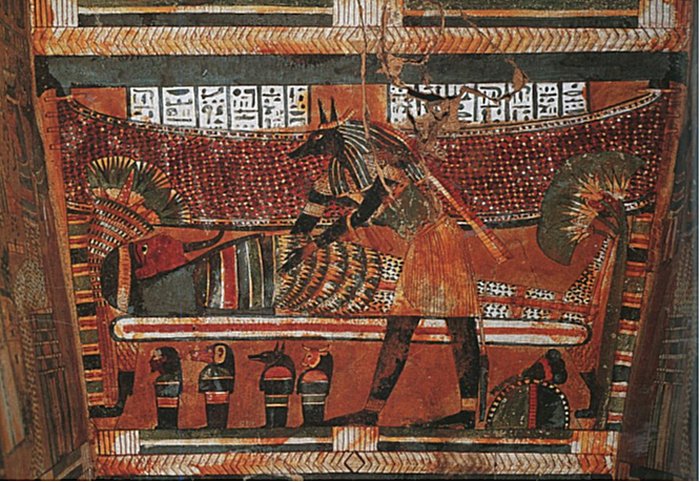 God Anubis attends the mummy of the deceased. Painted sarcophagus dated to the 22nd dynasty. Image credit: Cairo Museum
God Anubis attends the mummy of the deceased. Painted sarcophagus dated to the 22nd dynasty. Image credit: Cairo Museum
Was everyone able to reach eternity? Unfortunately, a proper funeral and even the most potent spells were not enough to come to paradise. The crucial factor was the behavior of man during his lifetime.
The dead on the way to paradise had to stand trial and defend themselves against an assembly of forty-two gods, and each of them had to be called by name. The ceremony took place in the Hall of Two Truths, also known as the Egyptian Hall of Maat, where the judgment of the dead was performed in the afterlife, including the 'Weighing of the Heart ceremony.
Suppose the heart was lighter than the feather of Maat, or its weight was equal. In that case, the soul could live on in the afterlife, help Osiris, the god of the afterlife, in judgment, associate with other souls, or even return to earth periodically to visit some places the person had loved in life. Then, the assembly of divine judges announced the verdict.
Both rich and poor burials were robbed
Robbers (usually in organized gangs of great professionals) could break into almost all tombs and deprive the deceased of valuable objects. The burials included shoes, clothing, jewels, games, cosmetics, perfumes, musical instruments, glass and pottery, food, furniture, and many more items that would serve the deceased in the afterlife.
In the case of the rich graves, it was difficult to notice that there was a robbery. Thieves usually got from behind, leaving the seals on the tomb's door intact. In many cases, they did not even have to fear being caught.
Money has always had its power, and a generous bribe to a corrupt priest or a high-ranking official made the authorities turn a blind eye to grave robberies.
Guarding the graves was an occupation that required special observance.
Written by – A. Sutherland AncientPages.com Staff Writer
Updated on February 28, 2024
Copyright © AncientPages.com All rights reserved. This material may not be published, broadcast, rewritten or redistributed in whole or part without the express written permission of AncientPages.com
Expand for referencesReferences:
Rosellini, F.Serino, The Monuments of Egypt and Nubia
Breasted J. H. Ancient Records of Egypt
Amber Books, The Egyptian Book of the Dead
More From Ancient Pages
-
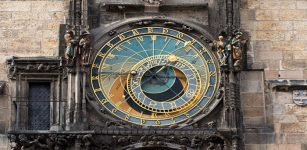 On This Day In History: Fascinating Prague Astronomical Clock Mentioned For The First Time – On Oct 9, 1410
News | Oct 9, 2016
On This Day In History: Fascinating Prague Astronomical Clock Mentioned For The First Time – On Oct 9, 1410
News | Oct 9, 2016 -
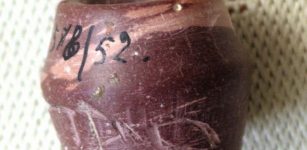 Unique Medieval Spindle Whorl With Cyrillic Inscription Discovered In Poland
Archaeology | Mar 9, 2018
Unique Medieval Spindle Whorl With Cyrillic Inscription Discovered In Poland
Archaeology | Mar 9, 2018 -
 2.37-Meter Sword And Unusual Shield Mirror Unearthed In Ancient Mound In Japan
Archaeology | Jan 27, 2023
2.37-Meter Sword And Unusual Shield Mirror Unearthed In Ancient Mound In Japan
Archaeology | Jan 27, 2023 -
 Europe’s Oldest Time Capsule Discovered Inside A Statue Of Jesus In Spain?
Archaeology | Dec 1, 2017
Europe’s Oldest Time Capsule Discovered Inside A Statue Of Jesus In Spain?
Archaeology | Dec 1, 2017 -
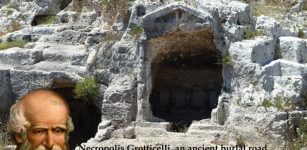 Archimedes From Syracuse – Master Of Science Whose Legacy Still Remains Powerful
Featured Stories | Sep 20, 2017
Archimedes From Syracuse – Master Of Science Whose Legacy Still Remains Powerful
Featured Stories | Sep 20, 2017 -
 Was The Legendary Tree Of Life Located In The Grove Of Eridu?
Featured Stories | May 19, 2016
Was The Legendary Tree Of Life Located In The Grove Of Eridu?
Featured Stories | May 19, 2016 -
 TB Was Transmitted in South America – DNA Study Shows How It Happened
Archaeology | Mar 17, 2022
TB Was Transmitted in South America – DNA Study Shows How It Happened
Archaeology | Mar 17, 2022 -
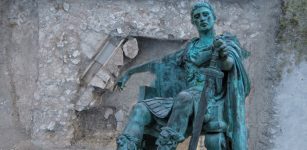 Major Discovery Of Ancient Roman Temple – Largest Evidence Ever Of The Imperial Cult
Archaeology | Jan 5, 2024
Major Discovery Of Ancient Roman Temple – Largest Evidence Ever Of The Imperial Cult
Archaeology | Jan 5, 2024 -
 Olmec Civilization Remains An Intriguing Ancient Puzzle
Civilizations | Feb 2, 2017
Olmec Civilization Remains An Intriguing Ancient Puzzle
Civilizations | Feb 2, 2017 -
 Very Rare Ancient Roman Horse Brooch Discovered In UK
Archaeology | Mar 7, 2020
Very Rare Ancient Roman Horse Brooch Discovered In UK
Archaeology | Mar 7, 2020 -
 Viking Grave And Sword Discovered In Norwegian Garden
Archaeology | Jul 3, 2023
Viking Grave And Sword Discovered In Norwegian Garden
Archaeology | Jul 3, 2023 -
 Fascinating Accounts Of Incredible Vehicles, Cosmic Cities In Vedic Literature
Civilizations | Oct 6, 2015
Fascinating Accounts Of Incredible Vehicles, Cosmic Cities In Vedic Literature
Civilizations | Oct 6, 2015 -
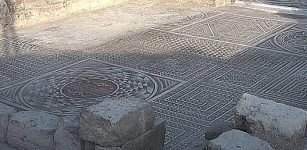 Large 4th Century Mosaic Floor Unearthed In İncesu, Kayseri Province, Turkey
Archaeology | Nov 28, 2023
Large 4th Century Mosaic Floor Unearthed In İncesu, Kayseri Province, Turkey
Archaeology | Nov 28, 2023 -
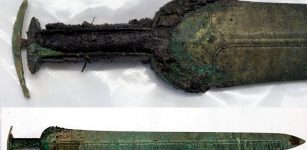 A 1.3 kg Heavy Bronze Sword Unearthed On Funen Island, Denmark
Archaeology | Mar 16, 2021
A 1.3 kg Heavy Bronze Sword Unearthed On Funen Island, Denmark
Archaeology | Mar 16, 2021 -
 On This Day In History: Battle of Englefield Was Fought – On Dec 31, 870
News | Dec 31, 2016
On This Day In History: Battle of Englefield Was Fought – On Dec 31, 870
News | Dec 31, 2016 -
 Ancient Mystery Of A Lost Polar Civilization That Vanished Without A Trace
Civilizations | Dec 27, 2020
Ancient Mystery Of A Lost Polar Civilization That Vanished Without A Trace
Civilizations | Dec 27, 2020 -
 First Discovery Of A 127-Million-Year-Old Side-Necked Turtle Fossil In UK
Fossils | Jun 13, 2023
First Discovery Of A 127-Million-Year-Old Side-Necked Turtle Fossil In UK
Fossils | Jun 13, 2023 -
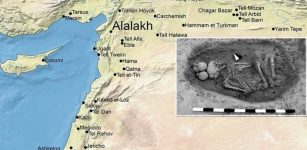 Researchers Study Human Mobility At The Bronze Age City Of Alalakh, Turkey
Archaeology | Jul 1, 2021
Researchers Study Human Mobility At The Bronze Age City Of Alalakh, Turkey
Archaeology | Jul 1, 2021 -
 Odin: Norse God Of War And Magic – Most Complex Figure Of The Norse Pantheon
Featured Stories | Oct 27, 2016
Odin: Norse God Of War And Magic – Most Complex Figure Of The Norse Pantheon
Featured Stories | Oct 27, 2016 -
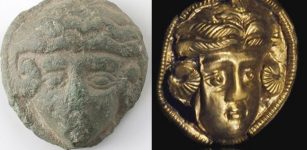 Unique Ancient Bronze Miniature Portraits Of Alexander The Great Found In Ringsted On The Island Of Zealand
Archaeology | Apr 11, 2024
Unique Ancient Bronze Miniature Portraits Of Alexander The Great Found In Ringsted On The Island Of Zealand
Archaeology | Apr 11, 2024


